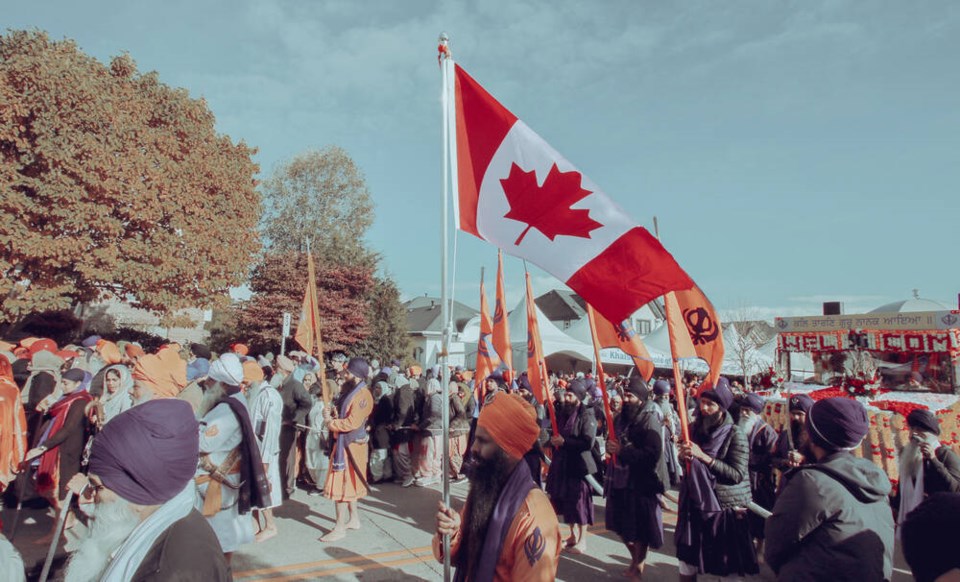Sikhs from across the globe are gathering to celebrate the annual Vaisakhi festival, which commemorates the foundation of the Khalsa.
While many Canadians may be familiar with the Khalsa parades that mark the Vaisakhi festival, a deeper understanding of the significance and history of the holiday may be required.
These parades showcase the Punj Pyaare, representing the first five Sikhs to join the Khalsa, leading the procession with a decorated float carrying the revered Sikh scripture Sri Guru Granth Sahib following close behind.
The Sikh community joins in, singing hymns, performing martial arts, and offering free food to all, regardless of their religious or cultural affiliation.
Vaisakhi is an ancient harvest festival celebrated globally.
It was on Vaisakhi in 1699 when Guru Gobind Singh founded the Khalsa order. The Khalsa comprises Sikhs who have embraced the Sikh initiation or “khande kee paahul” and pledged to serve all, uphold equality, and demonstrate compassion. Guru Gobind Singh Sahib introduced the Nash doctrine, which holds great significance for Sikhs every year as they celebrate the initiation of the Khalsa Panth. Members of the Khalsa were required to pledge to the doctrine of Dharam-nash, Bharam-nash, Karam-nash, Kul-nash, and Kirt-nash, which entailed renouncing considerations of caste, religion, superstition, clan, or profession in their dealings with one another and the community. This doctrine signifies an unwavering submission to Waheguru.
Through this, Sikhs attained a sovereign identity distinct from traditional society. Vaisakhi Day in 1699 was pivotal when Guru Gobind Singh called on Sikhs to adopt the Sikh Articles of Faith. These articles comprise the Kes – uncut hair; the Kangha – wooden comb; the Kara – an iron bracelet; the Kirpan – a sword; and the kacchera – breeches. Sikhs publicly identified themselves as part of the Khalsa and committed to upholding its principles and values, demonstrating their devotion to the Guru and their readiness to serve.
Vaisakhi is a significant occasion for Canadian Sikhs to celebrate their faith, reflect on their community’s contributions to Canada, and showcase their rich culture and traditions.
Nagar Kirtans, a feature of Vaisakhi celebrations globally, allow Sikhs to share their values and promote interfaith harmony and understanding. Khalsa Day parades during Vaisakhi enable individuals of all backgrounds to witness the vibrancy of Sikh culture and faith, fostering a sense of solidarity and inclusivity.
The event also provides a time for introspection and renewal of commitment to Sikh values and engaging in community service. Vaisakhi is an important occasion for Canadian Sikhs to celebrate their faith, culture, and values while promoting unity and fostering understanding among fellow Canadians.
*The Surrey Nagar Kirtan will be held on April 22, starting at 12885 85th Avenue in Surrey. Celebrations will take place throughout the day.



